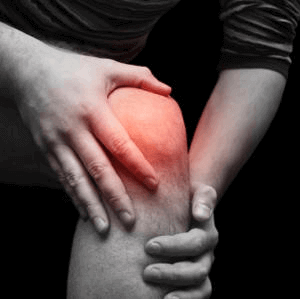Physiotherapy North York – P&C Rehab Services for Rehabilitation
Patellofemoral Pain Syndrome
 Patellofemoral Pain Syndrome (PFPS) is a condition characterized by discomfort and pain in the knee due to contact of the patella (knee cap) and the femur (Femur bone). PFPS is sometimes also referred as “runner’s kneeâ€, “housemaid’s knee” or “secretary’s knee”.
Patellofemoral Pain Syndrome (PFPS) is a condition characterized by discomfort and pain in the knee due to contact of the patella (knee cap) and the femur (Femur bone). PFPS is sometimes also referred as “runner’s kneeâ€, “housemaid’s knee” or “secretary’s knee”.
Causes
Abnormal gliding of the patella over the femur with knee movements can cause increase pressure and friction in the Patellofemoral joint. Several factors for mal mechanism are:
- Mal alignment of the patella as in knock knees, flat feet or unusual shaped patella.
- Over activities like running, jumping, climbing or descending stairs.
- Prolonged sitting with knees in a moderately bent position (the so-called “theater sign” of pain upon arising from a desk or theater seat).
- Quadriceps muscle imbalance or tight hamstring/weak quadriceps.
- Excess weight/obese.
Symptoms
- Knee pain; especially dull aching pain in the knee. Pain is mainly noticed while walking up and down stairs, squatting or getting up after prolong sitting.
- Crepitus on knee movements
- Knee buckling; the loss of quadriceps strength may cause the leg to “give out.”
- Stiffness in knee.
- Limited knee range of movement.
- Decreased quadriceps strength.
Diagnosis
- Physical examination – The physiotherapist or chiropractor will conduct a medical history with orthopaedic testing to make a diagnosis
- X ray – These are usually not helpful in diagnosing this condition but can be used to rule out other conditions
- Magnetic Resonance Imaging – MRI is a diagnostic tool which is used to see whether the pain is due to bone, cartilage or muscle problems.
- Arthroscopy – The internal structure and state of joint is visualized by inserting a camera through your knee joint.
Treatment
Around 80-90 percent of people suffering from patellofemoral pain recover fully and are able to resume their previous activities. Most active people respond to non-surgical treatments. Following is the line of management.
- Rice- Rest, Ice, Compression and elevation is the first line of treatment in acute and early stage of patellofemoral syndrome. RICE helps to alleviate pain and swelling.
- Physiotherapy or chiropractic care- Specific exercises for strengthening quadriceps, hamstrings and calf muscles. Stretching exercises for hamstrings and iliotibial band. Usually, six weeks to six months of supervised physical therapy and rehabilitation program is recommended depending on each case.
- Orthotics- If the underlining cause is flat feet then being fitted for orthotics can be beneficial in the management of this condition.
- Knee support- Wearing a patella tracking knee brace helps in proper knee mechanics and preventing further damage along with reducing pain by controlling knee movements. Patellofemoral taping techniques can help reduce pain by altering the track of the patella.
- Medications- Over the counter non-steroidal anti-inflammatory drugs like ibuprofen, naproxen help to reduce pain, swelling and stiffness.
- Surgery- In chronic and severe cases where conservative treatment fails to treat the symptoms, surgery is recommended. The Surgeon may have to perform reconstructive surgery depending on the cause.
If you are suffering from patellofemoral pain syndrome or have any questions don’t hesitate to contact us for your free consultation. The physiotherapist and chiropractor have vast experience in treating this condition. Lets end your knee pain today!
